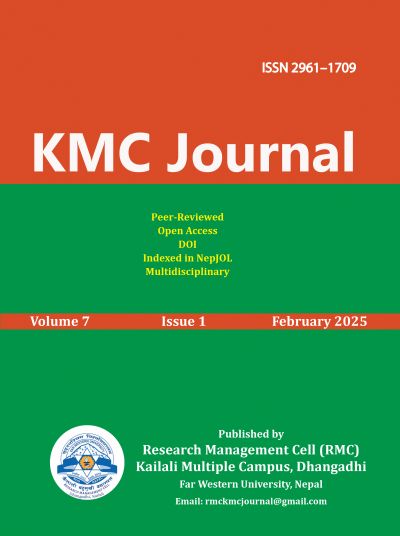Exploring English Language Proficiency Challenges among Rural Students
DOI:
https://doi.org/10.3126/kmcj.v7i1.75132Keywords:
Lingua franca, ELT, rural education, academic successAbstract
Secondary-level students often struggle with reading, writing and speaking simple words in rural areas. This study investigates the influences of English language weaknesses among secondary school students in rural Nepal. The purpose of this study is to dig out the challenges contributing to weaknesses in English language proficiency among rural secondary school students in Khatyad Rural Municipality of Mugu District. I employed a qualitative research approach, motivated by the theory of rurality. I selected Khatyad Rural Municipality as my research site. Two secondary-level teachers and three students were my participants. I employed in-depth interviews to acquire information. Thematic analysis was used to examine the data. My results showed a number of important themes regarding the challenges that contribute to English language deficiencies in secondary school students in rural areas. They are the lack of a positive learning environment after school, a lack of ongoing professional development opportunities for educators, lack of English proficiency in teachers and students, ill-equipped classrooms, little classroom interaction and feedback, and inadequate instructional materials. Understanding these challenges is essential for developing targeted interventions to enhance English language education. Educators should implement more effective educational strategies and resources to address these obstacles to improve the quality of English language education in these regions.
Downloads
Downloads
Published
How to Cite
Issue
Section
License

This work is licensed under a Creative Commons Attribution-NonCommercial 4.0 International License.
This license allows reusers to distribute, remix, adapt, and build upon the material in any medium or format for noncommercial purposes only, and only so long as attribution is given to the creator.




